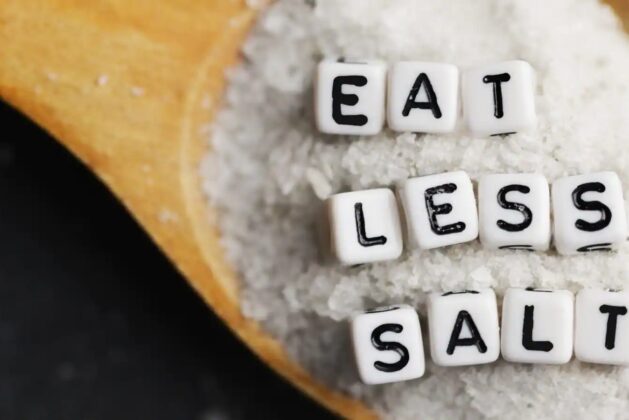[ad_1]
Did you know that salt in your daily diet puts you at risk for a heart attack or stroke? Whether it was actor Siddharth Shukla or singer KK, the cause of death for both was a heart attack. The number of people suffering from heart attacks, strokes and high blood pressure has increased over the past few years. For this, not only your lifestyle, but also your diet is equally responsible. In addition to this, a major contributor to cardiovascular disease is high sodium intake. If you want to reduce salt (sodium) in your diet without losing any flavor, here are 5 healthy options.
Sodium requirements are limited
Your body needs a certain amount of sodium to function properly. According to the Centers for Disease Control and Prevention (CDC), too much sodium is bad for your health because it increases your blood pressure and your risk of heart disease and stroke. Reducing sodium in your diet can help lower blood pressure and improve heart health.
Balance is the basic rule of any system. The same thing applies to your body. Sodium is essential for maintaining many of the basic activities our bodies perform. In which the muscles and nervous system work smoothly. But if sodium increases in your diet, or you start consuming too much, it can lead to a number of health problems.
In this case, you can reduce the amount of sodium in your diet by using some spices and herb flavorings. For more on these herbs and seasonings, we spoke with nutritionist Anita Jena to learn more about some of the things you can add to your diet to reduce or replace salt in your diet.
Follow these healthy options to reduce salt in your diet without losing its flavor:
1 garlic
Nutritionist Anita says garlic is one ingredient you can stock up on in your kitchen. Garlic can be used with chicken, fish, beef, pasta and main vegetables. While using raw garlic can enhance the spiciness of a dish, it creates a sweet and nutty flavor when roasted.
If you want the flavor of garlic, but don’t want to spend the time peeling, chopping, and/or roasting it, use garlic powder instead. Remember that garlic powder contains no sodium, but garlic has a salty flavor.
2 peppercorns
According to nutritionist Anita, most people only know peppercorns as a spice, which is the dried fruit produced by the plant Piper nigrum. Among them, black pepper is the most common pepper. But beyond that, there can be red, green, and white. It also depends on when they are harvested and how they are processed. Peppers are not only healthy, they add an unparalleled flavor to any dish or recipe.

juice of 3 lemons
Anita explains that substituting lemon juice for salt can double the taste of food. Plus, it also makes your food nutrient-dense due to its vitamin C content. Lemon juice is delicious with chicken, fish, vegetables, and even yogurt and sweets.
Use lemon zest and juice to make food even more delicious. If you like the taste of lemon, you can add lemon juice or lemon zest to the marinade.
4 cumin
Cumin, a member of the parsley family, is a dried seed that can be eaten whole or in powdered form. Cumin is used in North African, Arabic, Asian, Mexican and many other cuisines to add an earthy flavor to food. Cumin also enhances the flavor of a variety of foods and spice blends, including peppers, curries, falafel, potatoes, soups, and taco seasonings.
5 balsamic vinegar
Balsamic vinegar is prepared through a slow process. It is made from grape juice. It has a slightly complex taste, both sour and sweet. Because of this, it can be easily used in a variety of dishes. Balsamic vinegar is commonly used in salads, meats, vegetables, and pickles. It’s also delicious in some desserts.
Also read: Gajodhar Bhaiya gone, lost battle of life a month and a half after heart attack
[ad_2]



Leave a comment